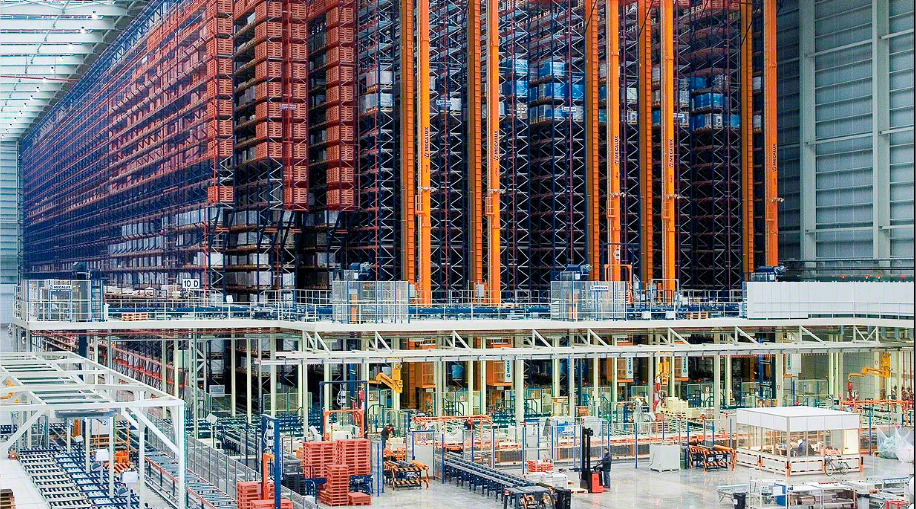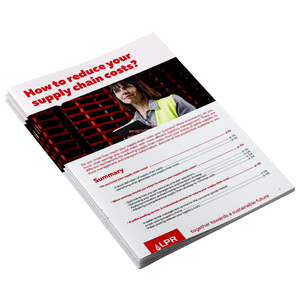The supply chain is means by which a product or service is transported from supplier to customer.
In this article we will share 7 principles known to optimise the supply chain.
The objective: to facilitate your understanding and enable you to implement effective changes.
Quick Navigation:
1 - Control the flows of the supply chain
2 - Master information to optimise the supply chain
3 - Improve the transport and storage of your goods
4- Optimise supply chain procurement processes
5- Implement a rigorous purchasing policy to reduce costs
6- Use performance indicators to optmise your supply chain
7- Share information with all stakeholders in the supply chain
1. Control the flows of the supply chain
Before we go any further, you should know the three main flows of the supply chain:
-
physical flows;
-
information flows; and
-
financial flows.
1.1. Physical flows
Refers to freight transportation. These flows include all stages of storage (predominently in warehouses) and transport (trucks, trains, maritime transport, etc.). To optimise the supply chain, it is vital to understand them fully.
Physical flows are the main source of costs in the supply chain.
Streamlining the flow of goods can be achieved by focusing on:
-
Optimisation of transport routes
-
Use of cross-docking
-
Switching to pallet pooling
-
Reducing the quantity of consumables used for deliveries
1.2. Information flows
Refers to the logistical information used to facilitate the proper functioning of physical flows. Today, information flows are becoming more important because of the optimisation opportunities they offer.
Modern information systems make it possible to cross logistical information with that of the macro environment to make predictions and thus optimise the value chain.
These information flows provide answers to the following questions:
-
Cargo traceability: where are the goods?
-
Transport management: What is in transit and by what means?
-
Delivery times: How long will it take for the goods to be delivered if I opt for one means of delivery or another?
Optimising the supply chain involves the effective collection, analysis and visualisation of information to make informed decisions.
1.3. Financial flows
These are all the financial transactions that take place at each stage of the supply chain. They are often associated with administrative flows that include all documents related to financial flows (orders, payment, etc.).
For companies working on an international supply chain, these flows also include exchanges from one currency to another.
Cryptocurrencies, which are becoming more prevalent in European and global financial systems, could also enter this sector soon.
When seeking to optimise a company’s supply chain, it is imperative:
-
That these three flows are perfectly controlled;
-
That the various stakeholders are effectively coordinated.
2. Master information to optimise the supply chain
Controlling information from the supply chain also makes it safer thanks to real-time visibility. Today, technology makes it possible to optimise the supply chain at every stage.

Here are 3 digital tools that offer meticulous control of information.
2.1. ERP (Enterprise Resource Planning)
Also known as Integrated Management Software, an ERP makes it possible to optimise the flow of information circulating between different departments of the same company. This tool is based on the principle of sharing information between these services.
ERPs make it possible to group several software functions within a single space:
-
Order management;
-
Invoice management;
-
Management of human resources;
-
Logistics information.
ERP is the foundation of optimised supply chain management. To complement it and further optimise logistics flows, the company often also uses a WMS (Warehouse Management System).
2.2. WMS (Warehouse Management System)
Warehouse Management Systems are implemented to optimise the management of operations in warehouses and storage spaces.
They make it possible to optimise flow management in warehouses. This digital space includes the following functionalities and provides some specific advantages:
-
Warehouse management: optimises the traceability, storage, evaluation and movement of internal stock.
-
Receipt of goods: planning and management of arrivals of goods, backorders, stock levels, etc. Synchronised with the ERP, it allows information to be updated in real-time.
-
Optimisation of inventory management: Reduction of the overall volume of inventory, optimisation of the availability of goods and the routes of handlers in the warehouse.
-
Order preparation: Decision support guides you towards the optimum choice of order preparation according to the information you provide (order size, time, type of customer, etc.).
-
Order dispatch: Having optimised preparation and packaging, this step allows the planning, control and management of the dispatch of goods.
-
Synthesis and control: Thanks to previously selected indicators, you have statistical information which makes it possible to further optimise inventories and the management of warehouses.
WMS are essential allies for optimising the supply chain and provide you with:
-
Precise management of the flow of goods in the warehouse;
-
Optimisation of storage methods and spaces;
-
Improved human resource management.
More broadly speaking, the WMS allows cost reduction by providing the better organisation and visibility needed to eliminate steps which do not add value.
2.3. TMS (Transport Management System)
Transportation management software is used to manage and optimise the movement of products through a distribution chain.
There are 2 types of TMS. TMS loaders and TMS carriers. Below, we explore the opportunities offered by these two solutions.
Loader TMS:
-
Calculate transport plans,
-
Provide transparency: the end customer can follow the transport in real-time,
-
Optimise transport routes: shippers can follow but also modify each shipment to optimise it.
-
Send information to the customer automatically: the TMS allows customers to be notified of the progress of their orders. Save time thanks to pre-invoicing.
-
Point out anomalies related to the transport of goods and therefore allow them to be rectified quickly.
Carrier TMS allows:
-
Optimised communication between warehouses and truck drivers thanks to on-board tools;
-
Better visibility on the maintenance of road transport;
-
Monitoring of indicators on consumables related to transport;
-
Optimised driving times, transport and delivery plans;
-
Shipments to be traceable in real-time.
ERP, WMS, and TMS are all tools that make it possible to improve the overall quality of service thanks to the optimisation of logistics operations.
3. Improve the transport and storage of your goods
Transport and storage are two major components of the supply chain, and are the main sources of expense.
In addition to adopting the tools mentioned above, improving the processes associated with them can be a step towards further optimising the supply chain and saving money.
3.1. Restructure your warehouses to optimise storage in the supply chain
Improving the structure of warehouses can lead to productivity gains across the entire supply chain.

Here are some recommendations from LPR - La Palette Rouge, to optimise your storage space. You can:
-
Create space for receiving orders;
-
Have a separate space for your goods storage space;
-
Have a place dedicated to the preparation of orders;
-
An area to store products ready for dispatch,
-
Reserve wide traffic lanes for the movement of loads and handling vehicles.
You should have a structure in place that can evolve according to your activity.
3.2. Choose cross-docking to optimise storage
Cross-docking is an organisational model that allows the delivery of a product to a consumer without going through the storage stage (from the unloading dock to the shipping dock). This method applies to all types of goods.
Cross-docking allows:
-
Further reduction in storage costs;
-
A simplification of the delivery stages, thanks to pooling;
-
A reduction in delivery times.
In fact, cross-docking makes it possible to pool flows and their costs between different customers. Some advantages:
-
Use of a single distribution center;
-
Multiple customers for the receipt of goods from the same supplier;
-
Multiple suppliers for the delivery of a single customer;
Cross-docking is often coupled with a WMS to automate continuous planning and order preparation (24/7).
3.3. Embrace Supply Chain Management (SCM)
Supply chain management brings together all the processes and software used for optimising your supply chain. Here is the strategy to implement:
-
Identify areas for improvement within your supply chain;
-
Detail the area that would benefit from improvement;
-
Prepare a schedule to form a list of corrective measures;
-
Schedule them over time;
-
List key performance indicators that will allow you to measure performance.
Optimising the supply chain today requires the digitalisation of processes. Adopting software and applications to manage your supply chain will allow you to:
-
Increase your margins;
-
Limit surpluses and stock shortages;
-
Optimise transport resources;
-
Visualise your stocks in real-time;
-
Anticipate supplies; and
-
Reduce the risks of the different stages of your production chain.
Companies are also increasingly using Green Supply Chain Management. By considering the environmental impact of the supply chain, you can achieve significant savings at each stage.
Choosing to make your production chain more sustainable now also allows you to anticipate future public policies.
Finally, Green Supply Chain Management improves the image of your company!
4. Optimise supply chain procurement processes
Here are 3 tips to optimise your supply chain procurement processes.
4.1. Invest in supply management software to optimise your company's supply chain
Controlling information flows allows for predictive management of your distribution chain. Investing in software is therefore an important step in optimising the supply chain.
Remember, more and more management software is available (ERP, TMS, WMS, etc.) to help with this business transformation. Here are the three main benefits:
-
A complete and permanent visibility on the stock needed to anticipate any interruptions;
-
A significant reduction in human error;
-
Anticipation of required contingencies for better responsiveness at each stage of the supply chain.
4.2. Use connected objects for better traceability
Increasingly used in the supply chain, connected objects are an asset for controlling the flow of goods. They are often connected to information management software packages.
In addition to process automation, they offer traceability of goods, both in transit and in the warehouse.
4.3. Use dashboards
Dashboards provide an overview of your inventory and supplies. They allow you to have a real-time picture of your stock, your supplies, your deliveries and distributions.
A dashboard provides many advantages for optimising the supply chain:
-
It can be configured to meet your needs.
-
It facilitates decision-making by centralising all information and all indicators.
-
It allows the implementation of an alert system, particularly useful in the event of a problem in the supply chain.
-
It enables better anticipation of delays or stock shortages - so that you can respond to them faster.
-
Better methods of managing stock and supplies, invaluable in response to any problems your company might be having.
5. Purchasing and sourcing: implement a rigorous policy to reduce supply chain costs
Previously in purchasing departments, the choice of suppliers was based on a single principle: cost.
Nowadays, optimising the supply chain in a sustainable way involves analysing purchases according to three criteria: Quality, Cost, Deadlines.
Slow delivery times or low product quality can cost a company heavily and will not necessarily be covered by savings made when simply switching to a cheaper supplier. In some instances :
-
A customer might require compensation following a delay in delivery;
-
After-sales service post delivery of a poor quality product might be expensive;
-
Legal disputes with external parties could prove costly;
Our advice: set up a purchasing policy for your company based on the choice of serious and responsive suppliers.
Thanks to the Costs / Deadlines / Quality prism, you can continue the upward trajectory of your production chain and establish robust long-term supplier relationships that save time spent on research.
6. Use performance indicators to optimise your company's supply chain
Supply chain optimisation is all about making informed decisions. Having several KPIs (Key Performance Indicators), or performance indicators, will allow you to do this.
Here are 3 suggested KPIs to optimise the supply chain:
1. Balancing KPIs allow decisions to be made in the event of a negative indication related to the following questions:
-
Are the objectives met?
-
Are customer expectations met?
-
Should we rethink certain actions?
-
Should new actions be implemented?
2. Alert KPIs allow you to flag abnormal situations in the supply chain. Decision-makers can put actions in place to remedy these situations quickly (delivery delays, production stoppages or stock shortages, etc.)
3. Anticipation KPIs take into account past and current situations to anticipate an undesirable event ahead of time.
By linking your ERP software and transport or storage software packages, your company is able to automate notifications: limited or out of stock, supply triggering, deliveries, DLC and DLUO close, etc.
7. Share information with all stakeholders in the supply chain
Making dashboards accessible to all stakeholders across the entire supply chain can have a positive impact.
Your teams can then discuss issues with partners, suppliers and customers alike. This offers the following advantages:
1. Each supply chain stakeholder can participate in decisions made to improve the chain;
2. Comparative analyses can be carried out:
-
Between hauliers to assess any cost overruns;
-
Between warehouses to spot falls in productivity;
-
To identify the exact cause of an anomaly.
3. You can challenge your suppliers.
If you would like to discuss your logistics issues with our business experts, you can contact them here. You can also access our other blog articles to learn more about pallet pooling.



